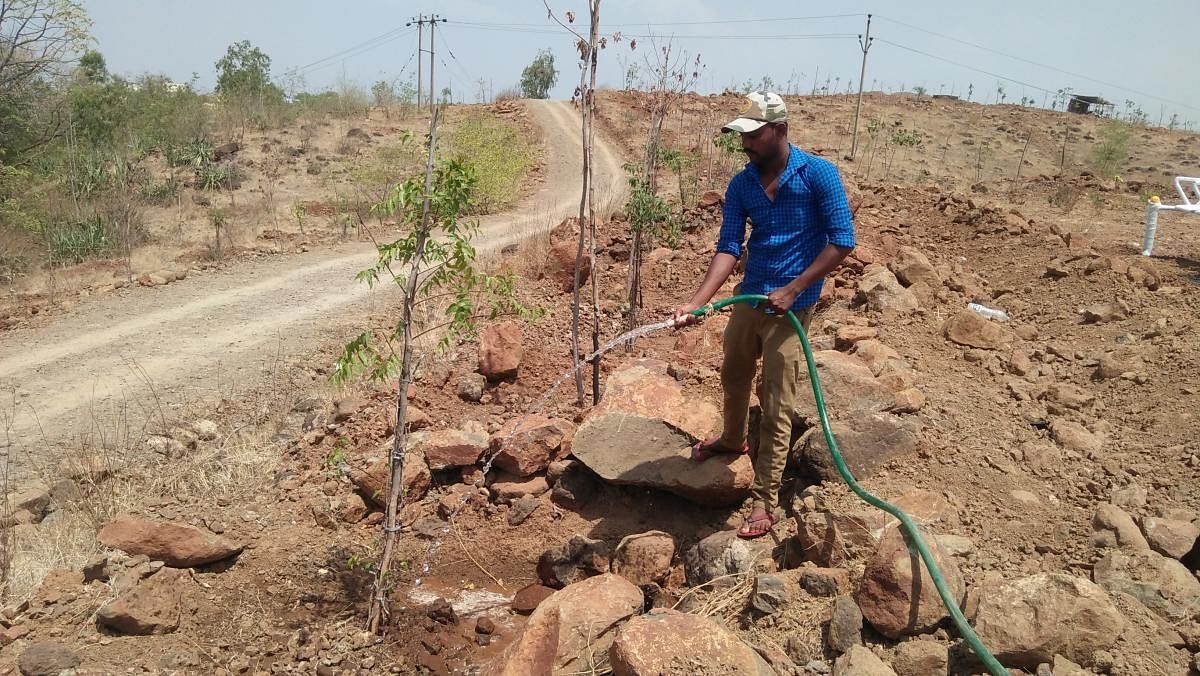
Urban planners have consistently adopted tree-planting initiatives as integral to climate action.
The case for afforestation has been a natural response in Bengaluru, a city with about 14.78 lakh trees on the last count, at only one tree for every seven people.
The sustainability of some of these afforestation practices, however, is contentious as the focus remains on planting targets, often backed with superficial ecological analysis and ineffective survival tracking systems.
Some of the emerging narratives, while not in conflict with the city’s requirement for a larger tree cover, are also driven by ways to ensure long-term results – they suggest a shift from the why to the how, and the what.
Dr T V Ramachandra of the Indian Institute of Science breaks the idea of sustainable afforestation down to the simple principle of ensuring natural resources as a support system.
Unscientific bureaucratic approaches to afforestation have limited the idea, but research-backed citizen activism could address the gaps.
“In Bengaluru, we have been trying to convince the government to develop a mini-forest in every ward. Studies show compared to non-native trees, native species have substantially more to offer in terms of biodiversity,” he said.
Anuja Malhotra, policy analyst at the Centre for Policy Design at the Ashoka Trust for Research in Ecology and the Environment (ATREE), said afforestation, as an idea, finds endorsement because trees are tangible, convenient markers to quantify efforts to mitigate impact of climate change.
However, mass tree plantation drives that do not factor in the local context and fail to consider the potential impact on parameters such as soil, biodiversity, and water tables may have unintended consequences for the ecology and people. The sustainable alternative is in identifying the right species for the region and planting them for the right reason, she said.
“Restoring ecosystems, and not mass plantation of trees, is the way forward. There is a lot of time and money being spent on afforestation initiatives. In many cases, they are driven by targets and these proposed plantations do not even have adequate land earmarked. We are proposing a shift from this top-down approach. We are saying all these efforts could be redirected to make more responsible, sustainable interventions,” she said.
The calls for transparency in mass afforestation programmes have been steered by questions on ineffective monitoring of the trees’ survival.
“Some government-backed afforestation initiatives are marked by a lack of transparency that invariably translates to mere numbers on paper. NGOs and citizen groups have, however, taken up extensive tree plantation drives that need to be scaled up,” Ramachandra said.
“It has been noted that the survival rates of the trees start dipping by about 25% to 30% after the first couple of years. Work on infrastructure projects, including new roads, and underground cabling have all contributed to the damage,” V Govindaraju, deputy conservator of forests, BBMP, said.
Saytrees, an NGO that creates urban and rural forests in association with Corporate Social Responsibility funding partners in around 10 states, has so far planted and supported over 2.5 lakh saplings in Bengaluru.
Durgesh Agrahari, head – programmes and partnerships, Saytrees, said the company, typically, develops a two-year maintenance plan for afforestation projects.
“We understand the geographical context. Then, we consult botanists and ecologists to decide on the native tree species,” he said.
Saytrees endorses the Miyawaki method of plantation that allows faster, denser growth.
On apprehensions about the sustainability of these densely packed forests, Agrahari said of the around 7,000 acres the organisation has planted over the past seven years, the Miyawaki method was followed only on 70 to 80 acres. He said physical audits have been effective in tracking survival rates of trees Saytrees has planted in Bengaluru.
Agrahari said democratisation of data and evidence regarding afforestation practices would make a good start.
“If someone wants to plant a tree, there should be easy access to information on how to do it. We need a proactive collaboration of governments, research agencies and like-minded entities,” he said.